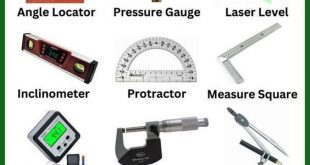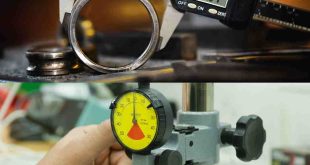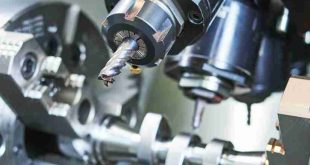Fundamentals of Machining and Machine Tools
Introduction
Machining and machine tools are integral to modern manufacturing, enabling the creation of precise components used in industries ranging from automotive to aerospace. These processes involve the controlled removal or addition of material to shape parts to exact specifications. With advancements in technology, machining has evolved from basic manual operations to sophisticated automated systems, improving efficiency, precision, and versatility. This document explores the core principles, processes, and innovations shaping the field of machining and machine tools.
Machine Tools and Machining Operations
Machine tools are essential for shaping and forming materials into desired shapes and sizes. Common machining operations include turning, milling, drilling, and grinding. These operations are vital for manufacturing components with precision and consistency, using tools like lathes, milling machines, and CNC systems.

Mechanics of Metal Cutting
The mechanics of metal cutting involve the interaction between the cutting tool and the workpiece. Key factors include cutting forces, material deformation, and energy dissipation. Understanding these mechanics helps optimize cutting parameters for efficiency and quality.
Temperatures in Metal Cutting
Heat generation in metal cutting occurs due to friction and plastic deformation. High temperatures can affect tool life and surface finish. Techniques like cutting fluid application and tool coatings help manage heat and improve machining performance.
Tool Life and Tool Wear
Tool life is a critical factor in machining, influenced by wear mechanisms such as abrasion, adhesion, and diffusion. Extending tool life involves selecting proper materials, coatings, and cutting conditions.
Advanced Machining Processes
Advanced machining processes, including laser machining, EDM, and ultrasonic machining, enable precision machining of complex geometries and hard materials. These processes often complement conventional methods.
Cutting Fluids and Surface Roughness
Cutting fluids reduce friction, cool the cutting zone, and improve surface finish. Proper fluid selection and application methods are essential to achieving desired roughness and extending tool life.
Economics of Metal-Cutting Operations
Economic considerations in machining include material costs, tool wear, production time, and energy consumption. Optimizing these factors enhances cost-effectiveness and sustainability in manufacturing.
Nomenclature of Cutting Tools
Cutting tools have specific nomenclature, defining their geometry, rake angle, clearance angle, and tool material. These parameters influence cutting performance and are tailored for specific operations.
Chip Control
Chip control is vital for maintaining surface quality and tool life. Techniques include chip breakers, optimal feed rates, and coolant application to manage chip formation and evacuation.
Machine Tool Vibrations
Vibrations in machine tools can negatively impact accuracy and surface finish. Strategies to minimize vibrations include rigid machine design, proper tool clamping, and balanced cutting parameters.
Grinding
Grinding is a finishing process that uses abrasive wheels to achieve high precision and surface quality. It is commonly used for hard materials and tight tolerances.
Design for Machining
Designing for machining involves creating components with features that are easy to machine, reducing complexity and cost. This approach integrates design and manufacturing for efficiency.
Manufacturing Machining and Production Technology
Modern production technology includes advanced machining techniques, automation, and robotics. These advancements streamline manufacturing processes, enhancing productivity and quality.
Manufacturing Systems and Automation
Manufacturing systems incorporate automation for flexibility and efficiency. Technologies like CNC, robotics, and IoT enable smart manufacturing environments.
Computer-Aided Manufacturing
Computer-aided manufacturing (CAM) uses software to program machine tools, optimizing paths and ensuring precision. CAM integrates seamlessly with CAD for efficient production.
Nonconventional Machining Processes
Nonconventional machining processes, such as water jet machining, EDM, and chemical milling, are employed for complex and hard-to-machine materials. These processes offer unique capabilities for advanced manufacturing.
Conclusion
The field of machining and machine tools is the backbone of manufacturing, combining traditional methods with cutting-edge technologies to meet the ever-increasing demands for precision, speed, and cost-efficiency. From understanding the mechanics of metal cutting to embracing nonconventional machining processes, manufacturers are continuously innovating to stay ahead. The integration of automation, computer-aided manufacturing, and sustainable practices ensures that machining remains a critical component of modern industrial advancements. As technology progresses, the fundamentals outlined here will continue to evolve, driving further innovation in the manufacturing sector.
 Boilersinfo Boiler and Mechanical Power Digital Library
Boilersinfo Boiler and Mechanical Power Digital Library


